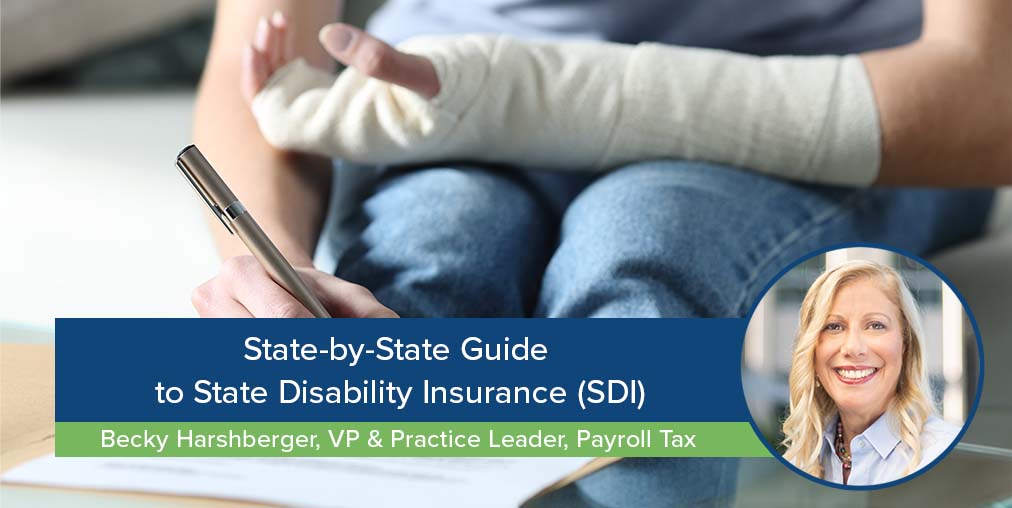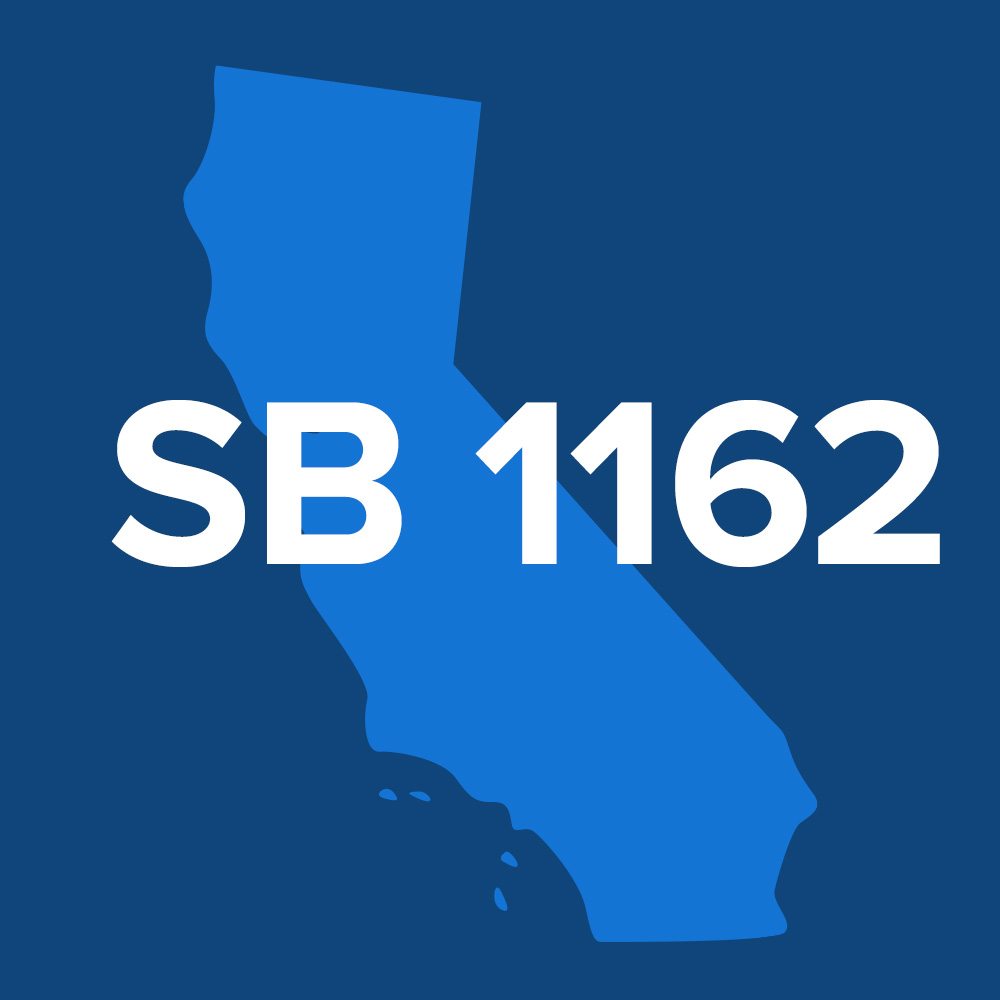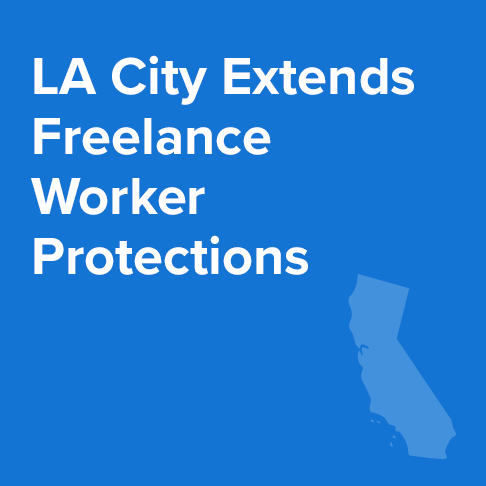State-by-State Guide to Disability Insurance for Production Accountants
Becky Harshberger

As a production accountant, it’s important to understand state disability insurance (SDI), also known as temporary disability insurance (TDI) or short-term disability insurance (STD). In this post, we’ll provide a basic overview of SDI, explain which states offer the program and how it’s structured in each state, and discuss tax implications for employees and employers.
What is State Disability Insurance (SDI)?
SDI is a state-run program that provides partial wage replacement to employees who are unable to work due to a non-work-related injury or illness—such as a serious illness, surgery or pregnancy. Some states also offer Paid Family Leave (PFL), which is an extension of SDI that provides wage replacement to eligible employees who need to take an extended leave.
Examples of individuals who may benefit from SDI and PFL are:
- Pregnant women or women who just gave birth, and their spouses
- New adoptive or foster parents
- Caregivers providing support for a seriously ill family member
- Military families with a member being deployed to a foreign country
These programs are funded through payroll taxes, and state agencies administer benefits.
State-by-State SDI Details
Five states currently offer state disability insurance: California, Hawaii, New Jersey, New York, and Rhode Island—as well as the Commonwealth of Puerto Rico. Each has unique eligibility requirements, benefit amounts, and coverage duration. Here are the details:
California
California offers disability insurance (DI) benefits to eligible employees through their State Disability Insurance Program, which is managed by the Employment Development Division. An overview of the California DI program benefits can be found here.
- Eligibility: Any California employee who is losing wages due to a non-work-related illness, pregnancy, or injury.
- How benefits are calculated: The State uses a base period (12 months divided into four consecutive quarters, three months each) to calculate a weekly benefit amount. The base period doesn’t include any wages paid at the time your disability begins.
- Benefit amount: The weekly benefit amount is 60% to 70% of wages earned in a 5 to 18-month period before the claim date. In 2023, the minimum weekly benefit amount is $50, and the maximum is $1,620.
- Length of benefit: Eligible employees receive 1) up to 52 weeks of full disability insurance benefits, or 2) the amount of wages calculated in the employee’s base period, whichever is less. If an employee takes a part-time job, they may be able to collect for more than 52 weeks.
- Employee SDI contributions: The 2023 SDI withholding rate (0.9%) is applied to a taxable wage limit of $153,164 per employee per calendar year. The max withholding per employee is $1,378.48. Withholdings are reflected as CASDI on each paystub.
Does California offer Paid Family Leave (PFL)? Yes. Learn more about the California PFL program.
Hawaii
Hawaii offers Temporary Disability Insurance (TDI) to eligible employees, managed by the Disability Compensation Division. Employers are required to provide this insurance. An overview and FAQ's about the Hawaii TDI program benefits can be found here.
- Eligibility: TDI can be collected by employees suffering a non-work-related injury who 1) are unable to perform their regular duty, 2) are under the care of a licensed practitioner, and 3) have been out of work for a maximum of two weeks prior to the qualifying injury. Before making a claim, employees must have worked at least 20 hours per week for at least 14 weeks and must have earned at least $400 in Hawaii in a 52-week time span. Weeks can be nonconsecutive, and work can be with more than one employer.
- How benefits are calculated: There are two types of employee TDI plans; statutory and specific. The plan type determines the weekly benefit amount, payment duration and an employee's waiting period before benefits begin. Benefits are taxable and must be reported as federal gross income.
- Benefit amount: Employees of employers with a statutory plan may receive 58% of their average weekly wages rounded to the next higher dollar but not more than the maximum weekly benefit amount, which is $765 in 2023. Employees of employers with a specific plan must consult the employer to determine their benefit.
- Length of benefit: Employers with a statutory plan may pay benefits for a maximum of 26 weeks during a benefit year. Benefit length may vary for non-statutory plans.
- Employer SDI contributions: Employers pay a portion of the SDI premium and share the cost with employees. The 2023 Maximum Weekly Wage Base is $1,318.48 (Employee Deduction 0.04% ($0.53) with an Employer match of 0.17% ($2.24)). Withholdings are reflected as HISDI on each paystub.
Does Hawaii offer Paid Family Leave (PFL)? No, Hawaii does not offer PFL. However, the State does offer unpaid family leave with job protection.
New Jersey
New Jersey's SDI program, called Temporary Disability Insurance (TDI) is administered by the State's Department of Labor and Workforce Development (DLWD). FAQs about the New Jersey TDI program benefits–including how to apply–can be found here.
- Eligibility: New Jersey employees who paid into the disability program through employment and met minimum gross earning requirements (worked 20 weeks earning at least $260 weekly or a combined total of $13,000 in the base year) are eligible.
- How benefits are calculated: New Jersey calculates an average weekly wage by dividing their base year earnings by the number of base weeks (any week that an employee earned $260 or more), then uses the result to determine the benefit amount.
- Benefit amount: Claimants are paid 85% of their average weekly wage up to the maximum weekly benefit rate set for that calendar year ($1,025 in 2023). Benefit payments are not taxed by the State nor federal government.
- Length of benefit: Benefit length is determined based on guidance from the claimant’s physician on how long it will take to recover, up to a maximum of 26 weeks.
- Employer SDI contributions: Contribution rates for each fiscal year are based on an employer's reserve ratio and the Unemployment Trust Fund reserve ratio. Here’s how contributions are calculated. Withholdings are reflected as NJSDI on each paystub.
Does New Jersey offer Paid Family Leave (PFL)? Yes, New Jersey offers Family Leave Insurance (FLI). Learn about the New Jersey FLI program.
New York
New York offers an SDI program managed by the Worker’s Compensation Board. An overview of the NY SDI program benefits, application details, and more can be found here.
- Eligibility: Employees must be under the care of a licensed practitioner to qualify (elective surgeries are not considered a qualifying event). If an employee quits their job, it may affect their right to disability benefits.
- How benefits are calculated: New York calculates 50% of an employee’s average weekly wage for the last eight weeks worked and uses that amount to calculate benefits. If counting the last week in which the disability began lowers the benefit rate, it’s not included in determining the average weekly wage.
- Benefit amount: A weekly benefit amount is determined using the calculation above. The maximum benefit is $170 per week, and payments are not taxed by the State or federal government. Benefit payments are not taxable.
- Length of benefit: Benefits are paid for up to 26 weeks of disability during any 52-consecutive-week period.
- Employer SDI contributions: New York employers can either fully cover the cost or opt to withhold a percentage of their employees’ wages to cover SDI. In either case, employers must withhold 0.5% of the paycheck (no more than $0.60 per week). Withholdings are reflected as NYSDI on each paystub.
Does New York offer Paid Family Leave (PFL)? Yes, New York offers PFL. Learn more about the NY PFL program.
Rhode Island
In 1942, Rhode Island was the first state to enact a short-term disability program managed by the Department of Labor and Training. Application instructions and FAQs about the RI disability program benefits can be found here.
- Eligibility: Sick or injured employees who are told by a Qualified Healthcare Provider (QHP) that they cannot work for at least seven consecutive days, who have earned wages in Rhode Island and paid into the TDI/TCI fund, are eligible. For claims filed effective January 1, 2023, or later, employees must have been paid at least $15,600 in the claim base period or must meet at least one of the following criteria:
- Earn at least $2,600 in one base period quarter
- Have base period taxable wages at least 1.5x their highest quarter of earnings
- Have base period taxable wages equal at least $5,200
- How benefits are calculated: Weekly benefit rates are equal to 4.62% of the wages paid in the highest quarter of the employee’s base period. Employees with dependent children under 18 may be entitled to a dependency allowance, which is equal to the greater of $10 or 7% of the benefit rate.
- Benefit amount: Employees can collect up to 36% of their total base period wages. The maximum weekly rate is $978 for beneficiaries with no dependents and $1,320 for beneficiaries with five dependents (max allowed). Payments are not taxed by the state or federal government.
- Length of benefit: Eligible claimants can collect for up to 30 full weeks.
- Employer SDI contributions: Employers must set aside 1.3% percent of an employee’s pay. Withholdings are reflected as RISDI on each paystub.
Does Rhode Island offer Paid Family Leave (PFL)? Rhode Island offers a Temporary Caregiver Insurance (TCI) program. Learn about the Rhode Island TCI program here.
The Commonwealth of Puerto Rico
Passed in 1968, Puerto Rico’s Disability Act, the Temporary Non-Occupational Disability Insurance (SINOT), is managed by the government of Puerto Rico.
- Eligibility: Any Puerto Rico employee who earned $150 in covered employment within a base year (the first four of the last five consecutive calendar quarters immediately preceding the period of disability).
- How benefits are calculated: The program pays up to 65% of an employee’s weekly earnings, determined using a base period calculation.
- Benefit amount: The minimum weekly benefit is $12, and the maximum is $113. In most cases, SDI payments are not taxable. However, if a recipient can’t receive unemployment benefits due to a disability and receives SDI instead, those payments are taxed.
- Length of benefit: Employees can collect a maximum of 26 weeks of benefits in a rolling 52-week period.
- Employer SDI contributions: The total contribution amount is 0.6% of the employee's first $9,000 of annual earnings, and the maximum annual employee contribution is $54. Contributions can be made wholly by the employer or split between the employer and the employee. Withholdings are reflected as PRSDI on each paystub.
Does Puerto Rico offer Paid Family Leave (PFL)? Puerto Rico offers a public Temporary Disability Insurance (TDI) program. Learn more about the TDI program.
For more information, please see this overview of PR disability benefits.
While this is a current overview, things change! It’s important to stay up-to-date with SDI legislation to make sure you’re not missing anything. You can also always reach out to the EP tax support team for help.
How to account for SDI in your production budget
Take these key steps to make sure your budget adequately accounts for SDI costs:
- Know the SDI requirements in each state where production is taking place: Familiarize yourself with the SDI requirements in each state where production is taking place and make sure you properly classify workers as employees versus independent contractors. In general, employees are eligible for SDI benefits, while independent contractors are not. Misclassifying workers can result in penalties and legal liability.
- Determine which employees may be eligible for SDI: Look at the number of employees you have on a production who are eligible for the SDI programs outlined above.
- Include SDI costs in the production budget: Once the estimated cost of employer SDI has been calculated, reflect these costs in the payroll section of your production budget.
- File required reports: Employers are required to file reports with state agencies in some states. Film productions should ensure that these reports are filed accurately and on time. Also, be sure to maintain accurate records to make sure your production is protected in the event of an audit or legal challenge. If you’re an EP customer, we’ll take care of this for you.
Now you know how SDI programs operate in each state. Follow the steps outlined above to make sure your production budget can absorb SDI costs and watch for legislation changes to stay compliant with SDI regulations!
This blog contains general information we are providing on a subject that may be of interest to you. Nothing in this blog should be considered tax advice. You should consult with your tax or legal advisors regarding the applicability of any of these rules to your specific circumstances and how best to handle them.
Related Content

Payroll Insights for Budgeting Success in 2024

Georgia Film Tax Credit Bill Fails

SB 1162: California Pay Data Reporting Law FAQs

California Pay Data Reporting Law Updates and Resources

Production Incentives Update: December 2023

A State-by-State Guide to Paid Family Leave

Production Incentives Update: November 2023

